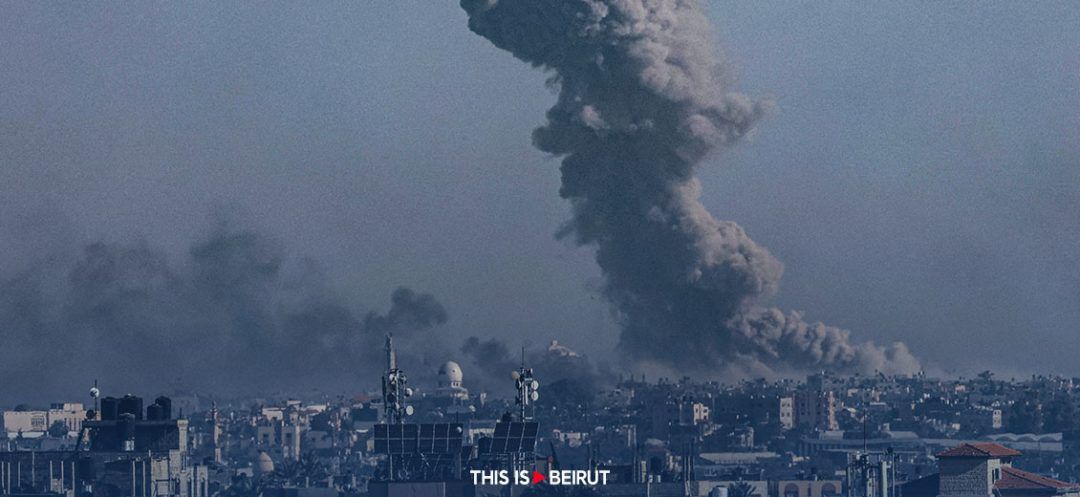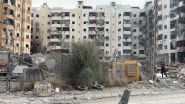
The life cycle of this war is near ending, but not the illusions and deceitfulness of its instigators, who are still adamant about pursuing it with no qualms about its disastrous consequences. Their bets on expanding its radius were belied at the onset, but the actors are still bent on continuing what seems to be a criminal undertaking driven by false calculations, moral callousness and an unchallenged power drive.
The state of unaccountability seems to continue to be perpetuated so long as there is no defeat and no constituencies capable of questioning war incumbents, putting an end to the moral usurpation and stemming the unfolding tragedies. Hamas and associates are enacting their final scenes without giving further thought to the aftermath, the way they did when they planned and executed this reckless and criminal war. Obviously, they are fighting at this stage for their survival, the perpetuation of their fallacy and their iconic stature.
The ongoing battles have logged an outstanding achievement: the destruction of Gaza and the intentional victimization of civilians who were literally discounted and relegated to political irrelevance. The survival of the group is deemed more important than the disastrous outcomes of the criminal undertaking which frames this war from end to end. Capitulation is being totally averted, and the human shields strategy is pursuing its devastating course with no sense of moral and strategic irrelevance. Accountability is nonexistent and civilians have been reduced to disposable aggregates with no moral dignity, and the reign of terror that prevailed over Gaza has cowed Palestinians into silence and submission. One wonders what’s going to be left after this ravaging war, and what the chances are of rebuilding a functioning political entity and effective governance. The Israeli objectives are quite clear: the demilitarization of Gaza, the negotiations over its transition governance and the finalization of its future status. Ironically, the continuing bloodshed is wedded to the firmly established illusion of the ultimate victory. Otherwise, Israelis are bound to reach a consensus over their strategic goals and overcome their differences insofar as their future relationships with the Palestinians. Their overall security, political and moral concerns are at stake, while they also deal with the thorny issues of the ongoing war and their impact on their democratic institutions. The balancing of different considerations and priorities is not an easy task when facing up to existential challenges.
The conflated Lebanese, Syrian, Iraqi and Yemeni operational platforms are the basic mainstays of the Iranian destabilization strategy in the region, instrumentalizing the power vacuums in Syria, the Iraqi systemic dislocations, the Yemeni inroads into the Red Sea and the control of the Lebanese State by Hezbollah, which coordinates various insurgencies throughout the region, challenges Israeli security and deflects the pressure on Iranian power politics, nuclear militarization and bargaining leverage with the United States. The state of strategic ambivalence is part of the political plot whose aim is to expand Iranian maneuvering room and navigate the hazardous course to full-fledged nuclear militarization with the least drawbacks.
The auxiliary status of Hezbollah, while catering to the Iranian expansion strategy, was quite adept at using leveraging political and military platforms to consolidate its controls over society and politics through political terror, tactical alliances, organized crime and manipulation of State institutions. Its religious proselytizing and attempts at infiltrating various Christian denominations and Islamic communities have instrumented political, security and financial resources and Shari’a jurisprudence to ratify its meandering domination politics. Hezbollah's takeover has succeeded in its usurpation strategy while transforming Lebanese institutions into mere appendages to domination politics.
Its legal and political extraterritoriality has sheltered behind sham constitutionality, diverted its formal steering course and forced its way while tampering with the mandates of UN resolutions 1701, 1680 and 1559 regarding Lebanese territorial integrity, the control of “all Lebanese territory by the government of Lebanon,” the adherence to the 1949 armistice stipulations and the “full respect of the Blue Line.” Paradoxically enough, none of these clauses are respected or taken into consideration whenever the domination and priorities of Hezbollah and its Iranian mentor are questioned.
These enumerated facts are to be taken into consideration when it comes to the assessment of war evolution and the search for sustainable political solutions. Overlooking the hard facts of the terrain and sticking to wishful thinking and moralistic gossip doesn’t help much when striving for genuine peacemaking. When a war is deliberately declared, the outcome of battles has the final say over its denouement. The visualization of the overlapping political and military dynamics and the competing power centers is quite essential in post-war scenarios when it comes to defining alternative peace courses, identifying peace partners and setting the coordinates of a new strategic landscape. Reshuffling the political scenery and its narrative are central if we are to oversee the rise of a new imaginary that sets the values and the rules of the future apart from those of the past.
Read more




Comments